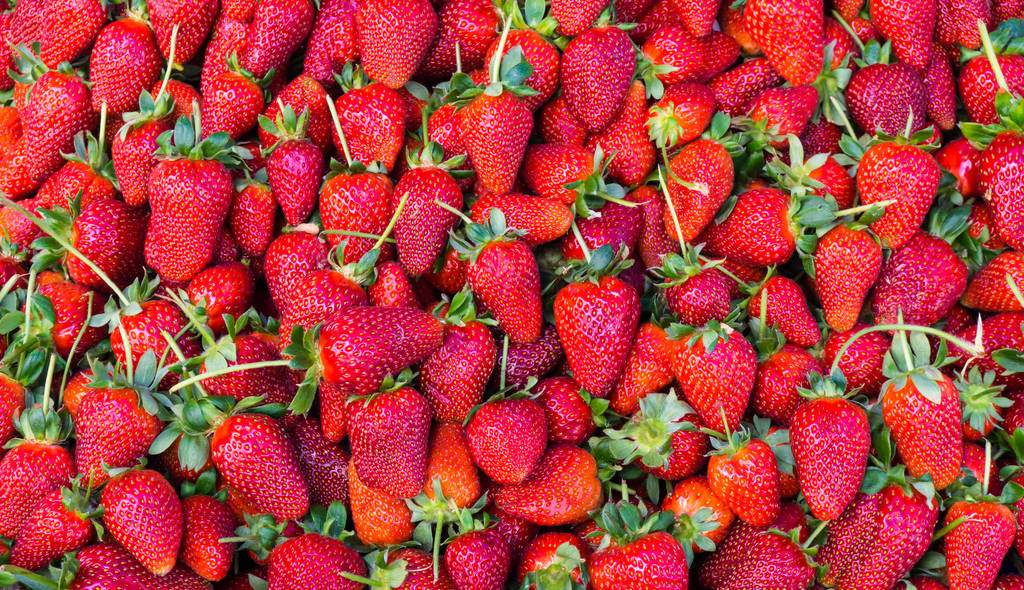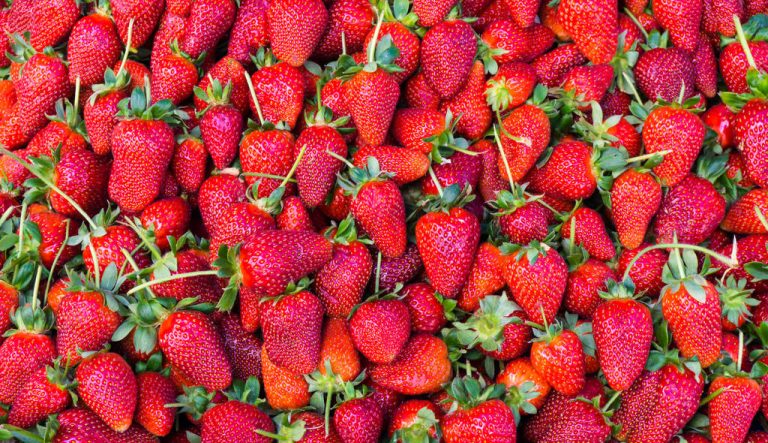Summer time is strawberry time. That’s what the seasonal calendar says. Imported strawberries can be bought in stores all year round. Here we explain why it makes sense to buy strawberries regionally and seasonally.

When is strawberry time?
The strawberry season is heavily dependent on the weather, so it can shift slightly from year to year. Depending on the region and the weather, strawberries bloom from April to May.
Accordingly, in mild regions, the first strawberries can be harvested from May. The strawberry season ends at the beginning of August at the latest. Strawberry season is from May to July.
Regional strawberries: home advantage over imported fruit
Who doesn’t like it, strawberry season? Delicious strawberry slices and cakes, strawberry jam or just fresh strawberries with cream. No wonder the strawberry is one of the most popular types of fruit. The trade is good for us and offers strawberries all year round. Who hasn’t bitten into a large red strawberry full of expectation in winter and been disappointed by the taste? Fruit that is allowed to ripen in peace and that is harvested seasonally can develop its typical taste more intensely. The proportion of vitamins and nutrients is significantly higher with “species-appropriate” cultivation of fruit and vegetables.
Strawberry imports artificially extend the strawberry season – not without consequences for the environment
Moist, humus-rich loamy soil is the ideal location for strawberries. The main export countries Spain, Italy and North Africa, along with Egypt and Morocco, have to spend a lot to create the natural growth conditions. Artificial fertilizers, chemicals and plastic tunnels are used to grow the fruit for export.
Unlike organic cultivation, the plants are planted very closely together. This makes powdery mildew easier to spread. A study by the Bavarian State Office for Health and Food Safety (LGL) examined the pollution of strawberries from abroad. A wide variety of chemical cocktails are sprayed against mildew infestation. Agents that are not approved for strawberries were also found in the samples.
Strawberries need a lot of water. Therefore, deeper and deeper wells are being drilled, which lower the groundwater level. The result is that the soils dry out and become deserted. In 2012, the WWF published an alarming report on the drying up of the Coto de Doñana nature reserve in Spain.
After harvesting, strawberries can only be kept refrigerated for a few weeks. Unlike bananas, strawberries cannot be picked and ripened when they are green. The imported strawberries have to be transported refrigerated all the way from the growing countries. Cooling and transporting it to our grocery stores consumes a lot of energy. The strawberries that we do not buy from regional cultivation have come a long way and left a considerable carbon footprint. The strawberries, which we buy from local fruit growers in June, are different.

Extend strawberry season with wild strawberries
You can also plant strawberries yourself on the balcony or in a flower pot. Together with flowers they are very decorative. If you want to harvest strawberries yourself well into autumn, you should definitely try wild strawberries. They are smaller and more intense in taste and bear fruit for a long time. This is a natural and sustainable way to extend the strawberry season.

